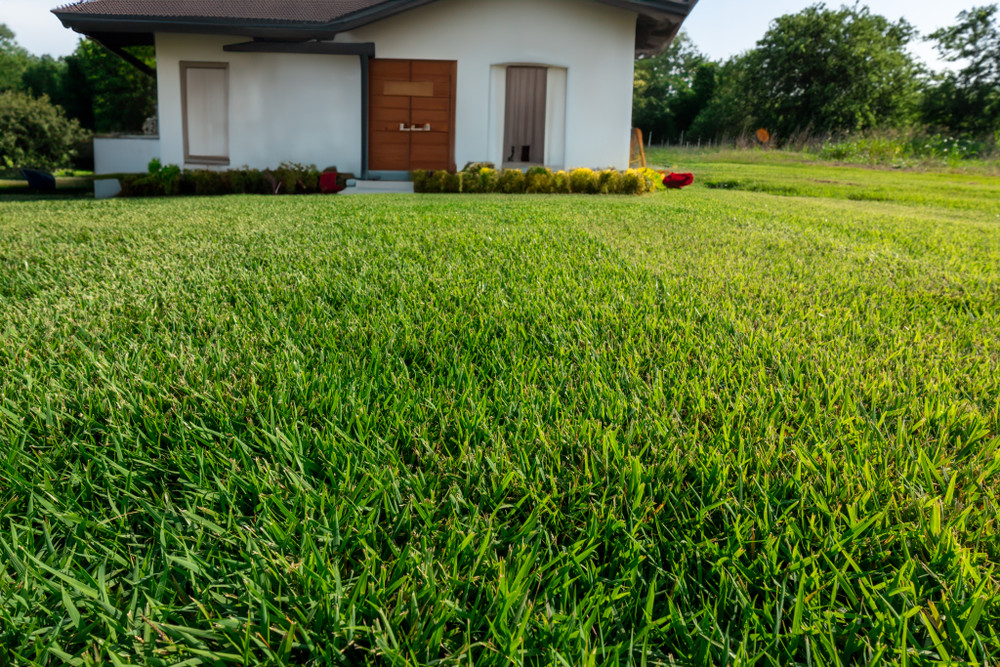Dallas Sod Guide – Best Sod Grass for Dallas TX, Dallas Lawn Care
Posted by Farm2Yard on Sep 4th 2025
Dallas Sod Guide – Best Sod Grass for Dallas TX, Dallas Lawn Care
1. Climate of Dallas — What Does It Mean for Sod?
Dallas sits firmly in a humid subtropical climate, featuring long, hot summers, mild winters, occasional drought, and clay-heavy soils. Summers typically reach well into the 90s °F, while winters are rarely harsh—most grasses survive but may go dormant briefly (College Fund Landscaping). These conditions favor warm-season grasses that flourish in heat, tolerate drought, and handle full sun.
2. Best Performing Sod Types for Dallas
According to Texas A&M Agrilife Extension and regional experts, the following warm-season sod grasses perform best in Dallas:
-
Bermudagrass – Highly heat- and drought-tolerant, tough, rapid self-repair. Ideal for full-sun, high-traffic lawns (Wikipedia).
-
St. Augustinegrass – Shade-tolerant, with lush, carpet-like appearance. Great under trees or in partially shaded yards.
-
Zoysiagrass – Combines heat tolerance with dense, soft, weed-resistant turf; intermediate between Bermuda’s toughness and St. Augustine’s texture, but finer.
-
Buffalograss – A native, eco‑friendly, extremely drought-tolerant choice; low mowing and low input once established, though best in full sun and naturalized settings (Turfgrass Producers of Texas).
3. Impact of Local Weather & Nuances
Dallas’s long, intense summers and periodic drought make drought tolerance critical. Warm-season grasses like Bermuda, Zoysia, or Buffalograss thrive under these conditions if properly established. Shade presence (e.g., East Dallas neighborhoods) shifts the recommendation toward St. Augustinegrass. Zoysia also tolerates shade well.
Clay soils typical of Dallas may impede drainage, making soil amendment and prep essential. Watering availability and local watering restrictions (due to drought) also shape maintenance strategy.
4. Seasonal Maintenance Guide
Spring (Mar–May)
-
Bermuda/Zoysia: Begin regular mowing at about 1.5–2 inches (Bermuda) or 1–2 inches (Zoysia). Fertilize as roots start to grow.
-
St. Augustine: Increase watering, mow at 2–3 inches, monitor for chinch bugs.
-
Buffalograss: Mow lightly or leave natural; minimal watering or fertilizing.
-
Prep for all: Aerate if needed, test soil, and start preventive pest controls.
Summer (Jun–Aug)
-
Bermuda: 1 inch watering per week, mow often, fertilize lightly.
-
Zoysia: 0.5–1 inch watering weekly, maintain mowing rhythm, dethatch if thatch builds (Better Homes & Gardens).
-
St. Augustine: Water regularly, maintain 2–3‑inch height, scout for pests.
-
Buffalograss: Little to no supplemental watering; minimal mowing.
Fall (Sep–Nov)
-
Gradually reduce watering.
-
Bermuda/Zoysia: Fertilize one last time in early fall; begin slow mow.
-
St. Augustine: Maintain care till dormancy.
-
Buffalograss: Let go naturally inactive; minimal input.
Winter (Dec–Feb)
-
All warm-season grasses may go brown/dormant; watering optional unless extended dry spells.
-
Little maintenance, but you can overseed warm-season grasses with winter rye if a green lawn is desired.
5. Best Time of Year to Lay Sod
Late spring to early summer is ideal (when soil temps are warm and days longer), enabling rapid root establishment before peak heat and drought strike (Sod Calculator, Williamson, Evergreen Lawn & Landscape, Better Homes & Gardens). Avoid planting in cooler months when dormancy slows growth. The Texas A&M “Turfgrass Establishment” and “Ecological Turf Tips” publications offer excellent installation guidance (Texas A&M AgriLife Extension Service).
6. General & Maintenance Tips
-
Site Matching: Select grass adapted to sun exposure, traffic, maintenance goals, and irrigation capacity (Williamson).
-
Prep & Installation: Remove debris, grade, loosen and amend soil. Lay sod promptly, then water thoroughly and consistently until roots take hold (Texas A&M AgriLife Extension Service).
-
Variety Matters: Choose cultivars bred for local stresses. Examples:
-
Water Wisely: Use irrigation that encourages deep roots—deep and infrequent watering once established.
-
Fertilizer: Use nitrogen-rich fertilizers in spring/summer; cut back in fall. Avoid over-fertilization that leads to disease or excess growth.
-
Pest Management: Monitor for insects: e.g., chinch bugs in St. Augustine, or white grubs in Zoysia.
-
Thatch Control in Zoysia: Thin with dethatching or light scalping in spring or fall to reduce thatch build-up (Better Homes & Gardens).
-
Local Expertise: Texas A&M’s AggieTurf program and county extension agents offer tailored turfgrass advice—consult them for site-specific recommendations (AggieTurf).

